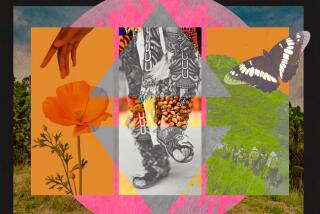Countywide : Celebrating Black Unity and Culture
With Christmas over and New Year’s Day approaching, some Orange County residents for the first time Tuesday observed Kwanzaa--for 24 years a celebration of black culture and unity.
“We have to believe in each other. We have to trust in each other,” said Charles W. Thomas, a leader of the black community in San Diego, as he opened the ceremony and invited celebrants to express their trust and belief in each other.
The group of about 25 people gathered at the Corbin Center in Santa Ana, held hands and greeted their neighbors as the celebration began.
Typically, Kwanzaa is a seven-day ceremony, beginning the day after Christmas and ending New Year’s Day. It literally means “first fruits” in Swahili, based on an African agricultural calendar, and on each day of the celebration one of the nguzo saba (seven principles) is observed and discussed.
The tradition was brought to the United States in the mid-’60s by Maulana Karenga, who translated ancient African writings from Swahili, and from them created a contemporary celebration of African-American heritage.
But Roland Holmes, program director of the Orange County Urban League and organizer of the event in Orange County, said that because this is the county’s first Kwanzaa, only the opening night would be celebrated as an introduction.
Thomas told the men, women and a few children in the meeting room about the seven principles of Kwanzaa.
The principles-- umoja (unity), kujichagulia (self-determination), ujima (collective work and responsibility), ujamaa (cooperative economics), nia (purpose), kuumba (creativity) and imani (faith)--encourage each celebrant to better his community by improving his own life.
Thomas then took the first principle--unity--and asked what it meant to the participants and how they would commit themselves to pursuing it during the coming year.
As the participants discussed the principle, they considered possible changes they could make in their daily habits, such as becoming more informed about black history and participating more in black community events.
Holmes asked the youngest boy and girl, both children of an Anaheim couple, to take the sole lit candle on the kinara --a candelabrum with one candle representing each of the seven principles--and light the next one.
The children’s parents said they brought them to Kwanzaa because they wanted them to learn about their heritage.
“We just wanted to learn about other black celebrations,” said Jerold Hall, who came with his wife, Earlene, and children, Christopher, 10, and Jennifer, 5. “We finally realized we’re not by ourselves; we (blacks in Orange County) are just spread out.”
At the end of the ceremony, members of the group drank from a variation of the karamu, a unity cup, as Holmes asked them to reflect on the first theme of Kwanzaa.
“I want you to close your eyes and visualize the commitment each of us has made publicly here tonight,” he said. “We have made the commitment to make the world a better place.”
More to Read
Sign up for Essential California
The most important California stories and recommendations in your inbox every morning.
You may occasionally receive promotional content from the Los Angeles Times.











